
- SAP Community
- Products and Technology
- Technology
- Technology Blogs by SAP
- 3D Object Reconstruction: Custom Videos and Length...
Technology Blogs by SAP
Learn how to extend and personalize SAP applications. Follow the SAP technology blog for insights into SAP BTP, ABAP, SAP Analytics Cloud, SAP HANA, and more.
Turn on suggestions
Auto-suggest helps you quickly narrow down your search results by suggesting possible matches as you type.
Showing results for
Advisor
Options
- Subscribe to RSS Feed
- Mark as New
- Mark as Read
- Bookmark
- Subscribe
- Printer Friendly Page
- Report Inappropriate Content
06-23-2023
9:57 PM
Introduction
Have you ever imagined reconstructing a 3D object using only one custom video, without the need for CAD? Have you ever wished to store data of 3D objects in industrial sites without losing spatial information, which is crucial for accurate length measurements? With the latest technologies like instant-ngp and three.js, these possibilities can be realized, and they can also be seamlessly integrated with SAP AI Core and SAP BTP Kyma, respectively.
Instant ngp (NeRF)
A neural radiance field (NeRF) is a fully-connected neural network capable of producing new perspectives of intricate 3D scenes using only a limited collection of 2D images.
Traditionally, training and rendering a NeRF model using deep learning techniques can be a time-consuming process, often taking an entire day. However, NVIDIA has developed the Instant ngp, the latest NeRF variant that significantly reduces the training and rendering time to just 30 minutes. Furthermore, this latest NeRF is capable of determining the color properties of the rendered 3D object.
There are 6 steps to take a 3D rendering in GUI system. Here is the process:
Step 1. Take a video for 1 minute
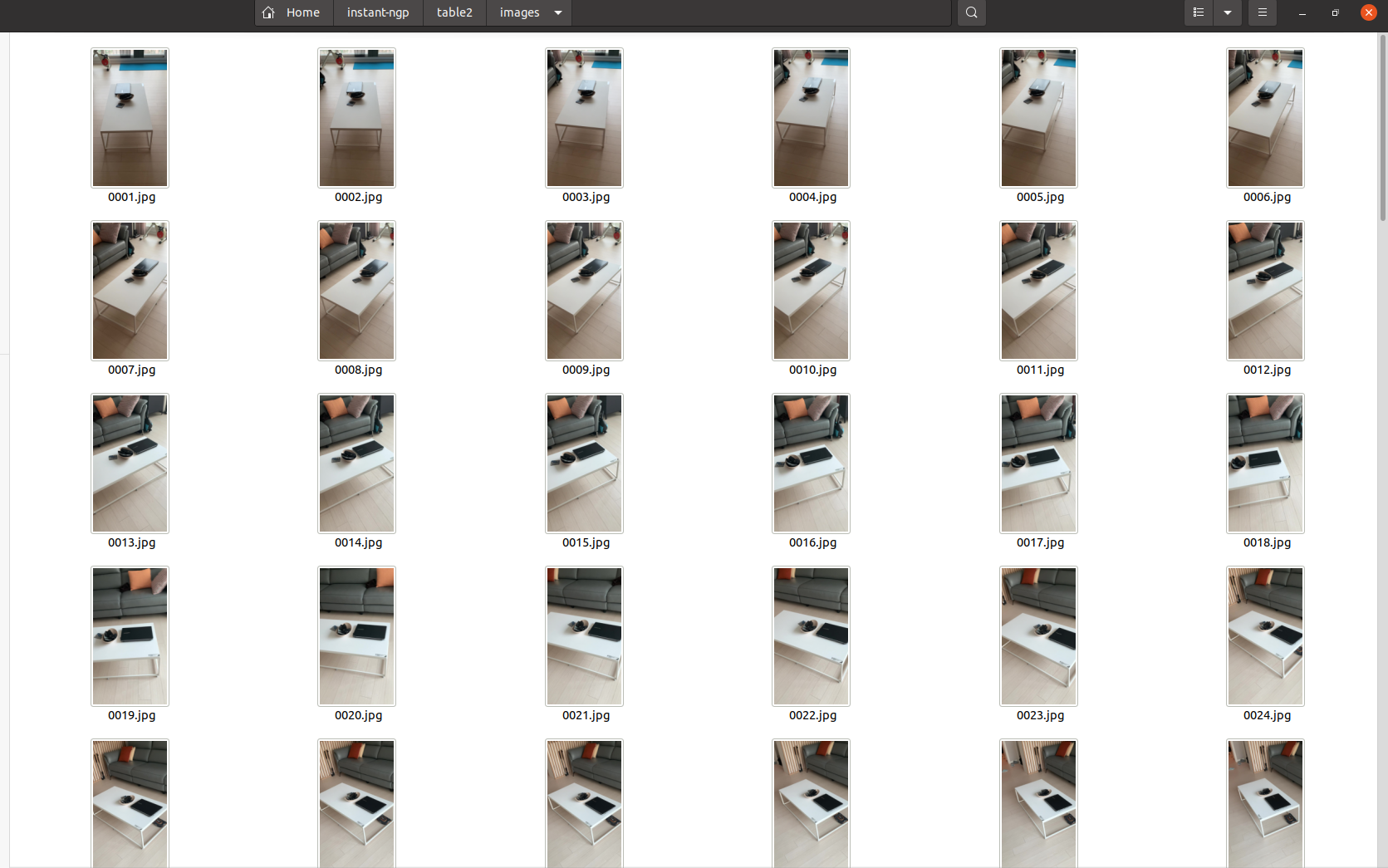
Step 2.Convert Video to Images

Step 3.Detect Camera Poses
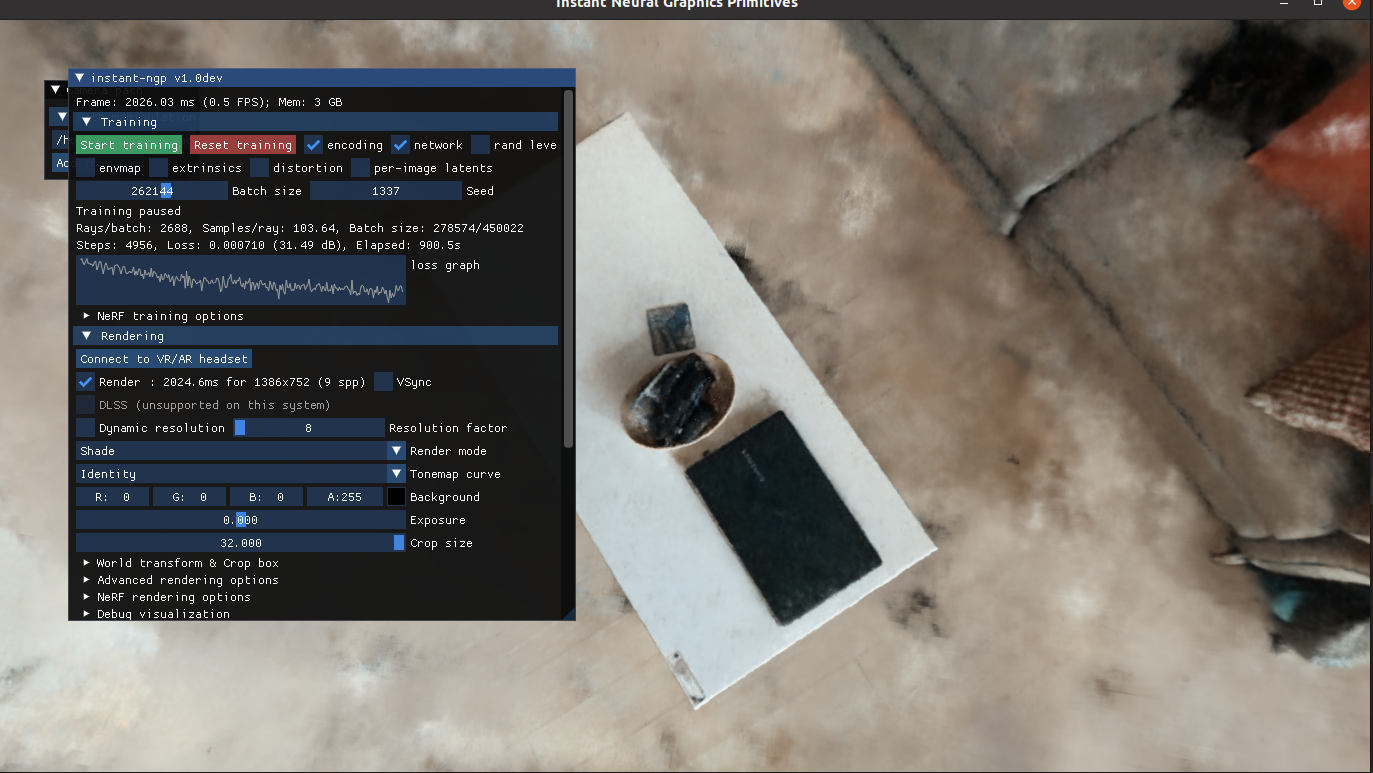
Step 4. Rendering
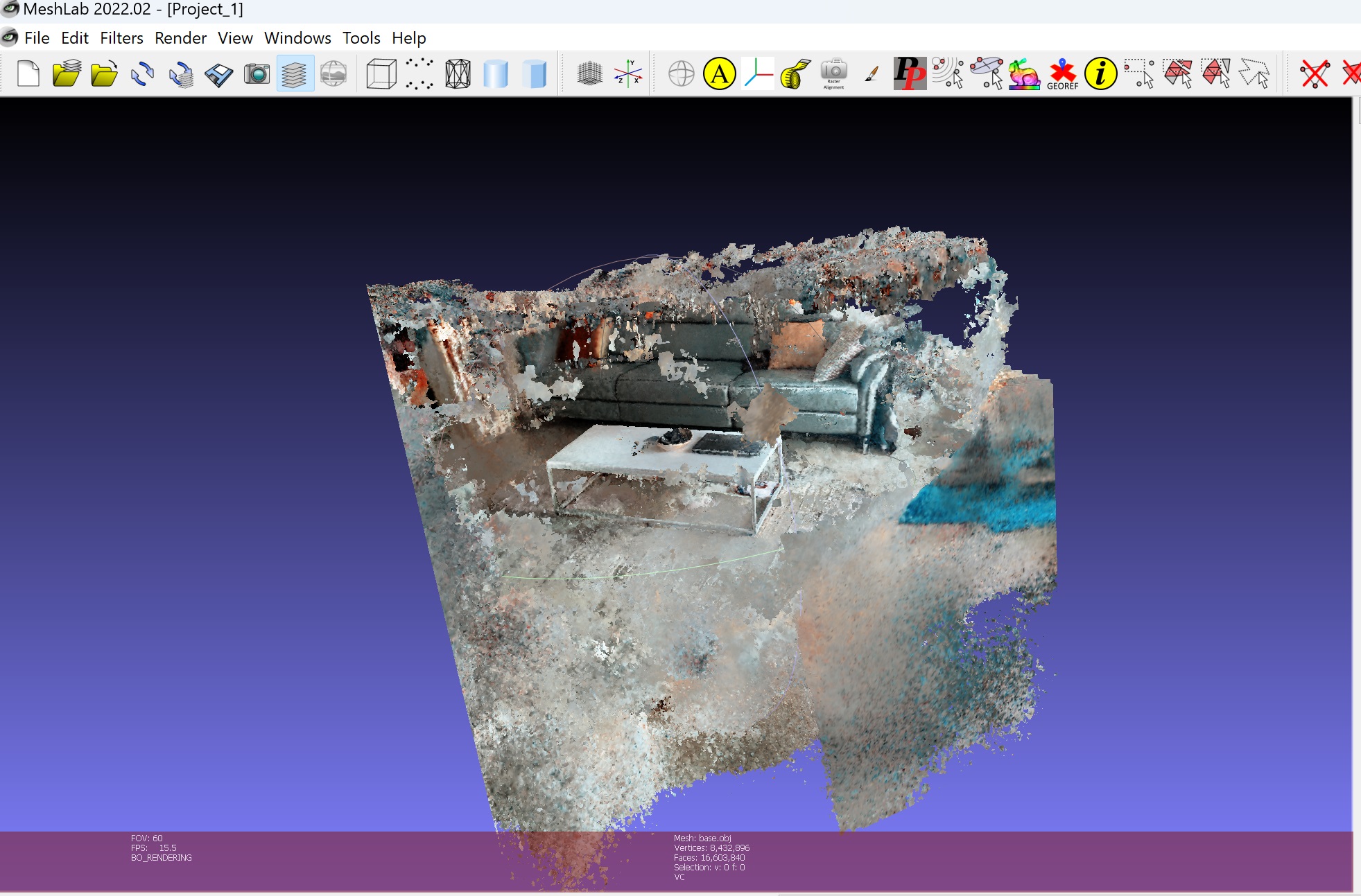
Step 5. Export Mesh
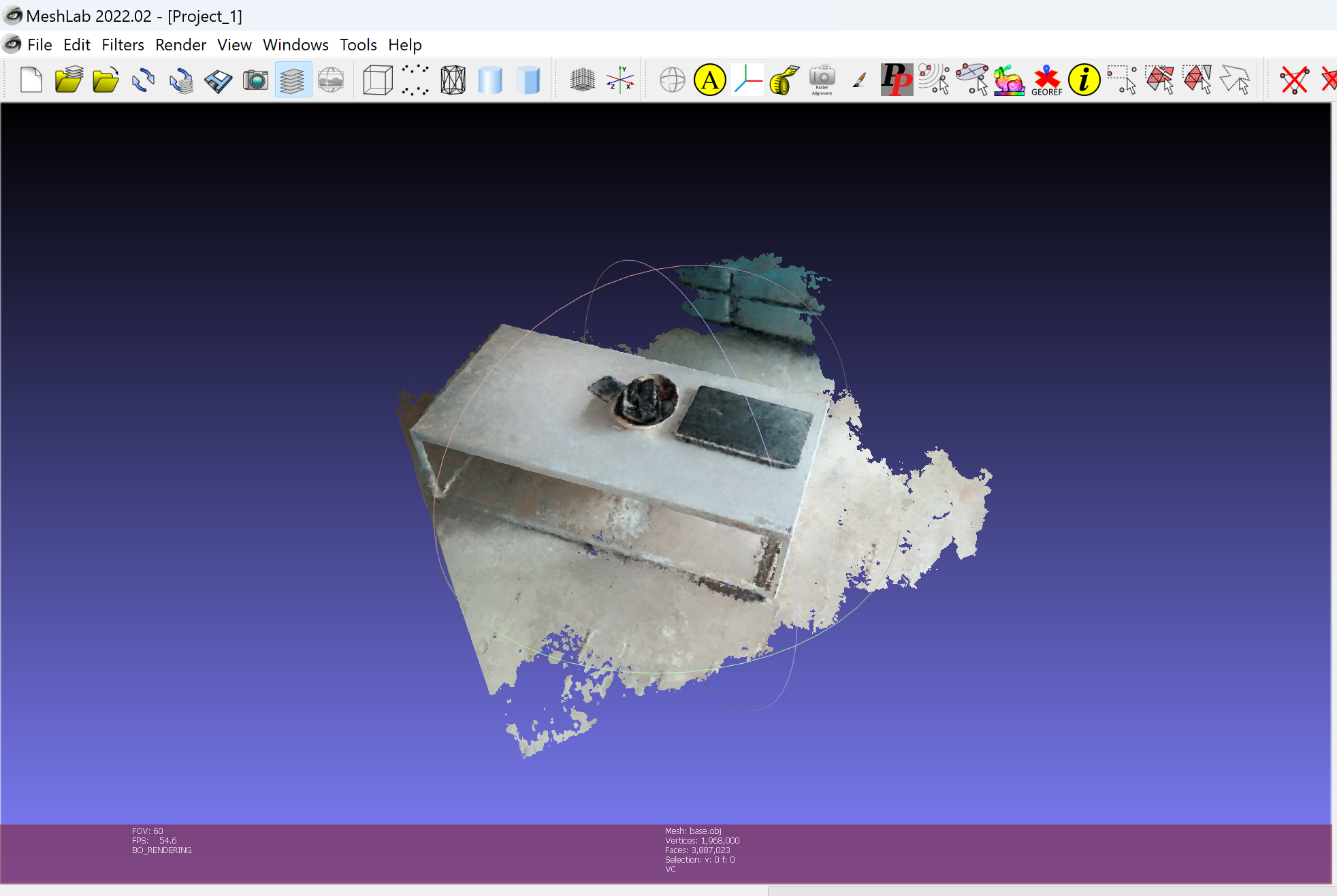
Step 6. Smoothing and Scaling and removing noise
It is truly remarkable that we can create a 3D object from just a single video.
However, in order to streamline the entire process and achieve 3D reconstruction in a cloud system, leveraging the SAP AI Core is essential. The SAP AI Core provides the necessary tools and capabilities to minimize the required steps and efficiently perform 3D reconstruction tasks.
SAP AI Core
SAP AI Core is one of the powerful SAP BTP service to deploy and manage artificial intelligence. When working with SAP AI Core, GPU acceleration can significantly enhance the quality of mesh and rendering, while this cloud computing allows you to skip all the necessary process. You can integrate the above 6 steps by following SAP AI Core tutorial, which will guide you through the process of connecting GitHub to SAP AI Core, creating an object store secret, configuring the necessary settings, and executing the process successfully.

First, you have the option to modify the Docker file according to your requirements. Next, to ensure seamless integration with Amazon S3, you can leverage a YAML file to effectively configure and manage the dataset.
apiVersion: argoproj.io/v1alpha1
kind: WorkflowTemplate
metadata:
name: instant-ngp-v56-i584986
annotations:
scenarios.ai.sap.com/description: "Yong Auto instant-ngp 3D Rendering"
scenarios.ai.sap.com/name: "yong-instant-ngp-train"
executables.ai.sap.com/description: "yong Auto instant-ngp 3D Rendering executable"
executables.ai.sap.com/name: "yong-instant-ngp-executable"
artifacts.ai.sap.com/image-data-v1.kind: "dataset"
artifacts.ai.sap.com/image-model-v1.kind: "model" #model - default - object store secret
labels:
scenarios.ai.sap.com/id: "yong-instant-ngp"
executables.ai.sap.com/id: "yong-instant-ngp-training"
ai.sap.com/version: "1.0.0"
spec:
imagePullSecrets:
- name: credentialrepo-i584986
entrypoint: image-instant-ngp-training
templates:
- name: image-instant-ngp-training
metadata:
labels:
ai.sap.com/resourcePlan: infer.l
inputs:
artifacts:
- name: image-data-v1
path: /volume/
outputs:
artifacts:
- name: image-model-v1
path: /model/
globalName: image-model-v1
archive:
none: {}
container:
image: "docker.io/ertyu116/instantngp:v7"
ports:
- containerPort: 9001
protocol: TCP
imagePullPolicy: Always
command: ["/bin/sh", "-c"]
args:
- >
set -e && echo "---Start Training---" &&cmake -DNGP_BUILD_WITH_GUI=off ./ -B ./build && cmake --build build --config RelWithDebInfo -j 8 && python3 ./scripts/colmap2nerf.py --video_in /volume/IMG_0184.MOV --video_fps 2 --run_colmap --aabb_scale 2 --out /volume/transforms.json --overwrite && ls /volume/ && python3 ./scripts/run.py --scene /volume --save_snapshot /model/base.msgpack --save_mesh /model/base.obj --train --n_steps 35000 && echo "---End Training---"
yaml file for SAP AI Core
By doing so, you can observe the train result in SAP AI Core.
- Epoch: 35000
- Build: 10 min
- Estimating camera pose:5 min
- Train: 5 min
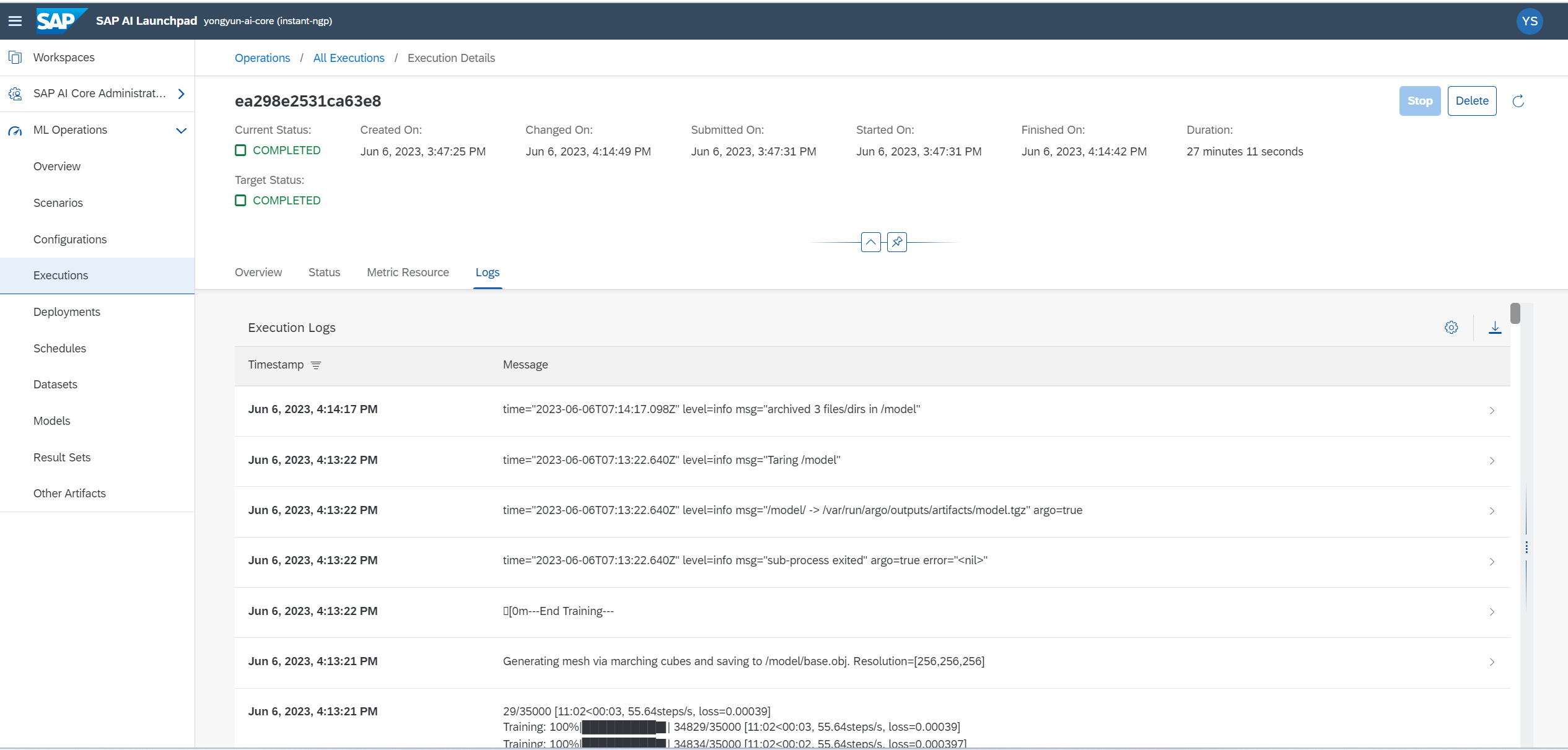
SAP AI Core
At the end of the process, you will notice the generation of the "ea298e2531ca63e8" folder, which contains the 3D output file named "Base.obj". This file is stored in Amazon S3.

Output file is stored in S3
After obtaining 3D file, you can visualize the 3D object with Three.js in SAP BTP Kyma Runtime.
SAP BTP Kyma Runtime
Visualization may be one of the most critical tasks in computer vision. To accomplish this, Three.js can be utilized. Moreover, for making it accessible to the public, there is no doubt that leveraging SAP BTP Kyma runtime is the most effective approach.
By utilizing this JavaScript code within Three.js, you can implement a measurement feature for 3D objects.
const raycaster = new THREE.Raycaster()
let intersects
const mouse = new THREE.Vector2()
renderer.domElement.addEventListener('pointerdown', onClick, false)
function onClick(event) {
if (ctrlDown) {
raycaster.setFromCamera(mouse, camera)
intersects = raycaster.intersectObjects(pickableObjects, false)
if (intersects.length > 0) {
if (!drawingLine) {
//start the line
const points = []
points.push(intersects[0].point)
points.push(intersects[0].point.clone())
const geometry = new THREE.BufferGeometry().setFromPoints(points)
line = new THREE.LineSegments(
geometry,
new THREE.LineBasicMaterial({
color: 0x00000,
linewidth: 5,
transparent: true,
opacity: 1.00,
// depthTest: false,
// depthWrite: false
})
)
line.frustumCulled = false
scene.add(line)
const measurementDiv = document.createElement('div')
measurementDiv.className = 'measurementLabel'
measurementDiv.innerText = '0.0cm'
const measurementLabel = new CSS2DObject(measurementDiv)
measurementLabel.position.copy(intersects[0].point)
measurementLabels[lineId] = measurementLabel
scene.add(measurementLabels[lineId])
drawingLine = true
} else {
//finish the line
const positions = line.geometry.attributes.position.array
positions[3] = intersects[0].point.x
positions[4] = intersects[0].point.y
positions[5] = intersects[0].point.z
line.geometry.attributes.position.needsUpdate = true
lineId++
drawingLine = false
}
}
}
}
document.addEventListener('mousemove', onDocumentMouseMove, false)
function onDocumentMouseMove(event) {
event.preventDefault()
mouse.x = (event.clientX / window.innerWidth) * 2 - 1
mouse.y = -(event.clientY / window.innerHeight) * 2 + 1
if (drawingLine) {
raycaster.setFromCamera(mouse, camera)
intersects = raycaster.intersectObjects(pickableObjects, false)
if (intersects.length > 0) {
const positions = line.geometry.attributes.position.array
const v0 = new THREE.Vector3(positions[0], positions[1], positions[2])
const v1 = new THREE.Vector3(
intersects[0].point.x,
intersects[0].point.y,
intersects[0].point.z
)
positions[3] = intersects[0].point.x
positions[4] = intersects[0].point.y
positions[5] = intersects[0].point.z
line.geometry.attributes.position.needsUpdate = true
const distance = v0.distanceTo(v1)
measurementLabels[lineId].element.innerText = distance.toFixed(2) + 'cm'
measurementLabels[lineId].position.lerpVectors(v0, v1, 0.5)
// console.log('Distance:', distance);
}
}
}measurement code for 3D object
To run your server using Node.js, you can create a Docker file. Once you have created the Docker file, you can build a Docker image. This image can then be used to spin up containers that run your Node.js server
# Use an official Node.js image as the base
FROM node:14-alpine
# Set the working directory in the container
WORKDIR /app
# Copy all file to Docker
COPY . .
# Expose the port that your application will run on
EXPOSE 80
# Start a simple HTTP server to serve the HTML file
CMD ["npx", "http-server", "-p", "80", "-c-1", "."]
Dockerfile for three js
Once you have set up your server using Node.js within a Docker container, you can further enhance your deployment by utilizing a YAML file for SAP BTP Kyma.
apiVersion: v1
kind: Namespace
metadata:
name: yongyun-mythreejs
labels:
istio-injection: enabled
---
apiVersion: apps/v1
kind: Deployment
metadata:
name: my-threjs-app
namespace: yongyun-mythreejs
spec:
replicas: 1
selector:
matchLabels:
app: my-threjs-app
template:
metadata:
labels:
app: my-threjs-app
version: v1
spec:
containers:
- name: my-threjs-app
image: ertyu116/my-threejs-app:v13
imagePullPolicy: Always
resources:
limits:
memory: "128Mi"
cpu: "500m"
requests:
memory: "32Mi"
ports:
- containerPort: 80
name: http
---
apiVersion: v1
kind: Service
metadata:
name: my-threjs-app-service-v1
labels:
app: my-threjs-app
spec:
selector:
app: my-threjs-app
ports:
- protocol: TCP
port: 80
targetPort: 80
---
apiVersion: gateway.kyma-project.io/v1alpha1
kind: APIRule
metadata:
name: yongyun-mythreejs
namespace: yongyun-mythreejs
spec:
gateway: kyma-gateway.kyma-system.svc.cluster.local
service:
name: my-threjs-app-service-v1
port: 80
host: yongyun-mythreejs
rules:
- accessStrategies:
- handler: allow
methods: ["GET", "POST"]
path: /.*
mutators: []
yaml file for SAP BTP kyma
Lastly, you have the capability to measure the length using the provided functionality. It is important to note that the accuracy of the length measurement is approximately +/- 2 cm when scaling is applied in MeshLab.
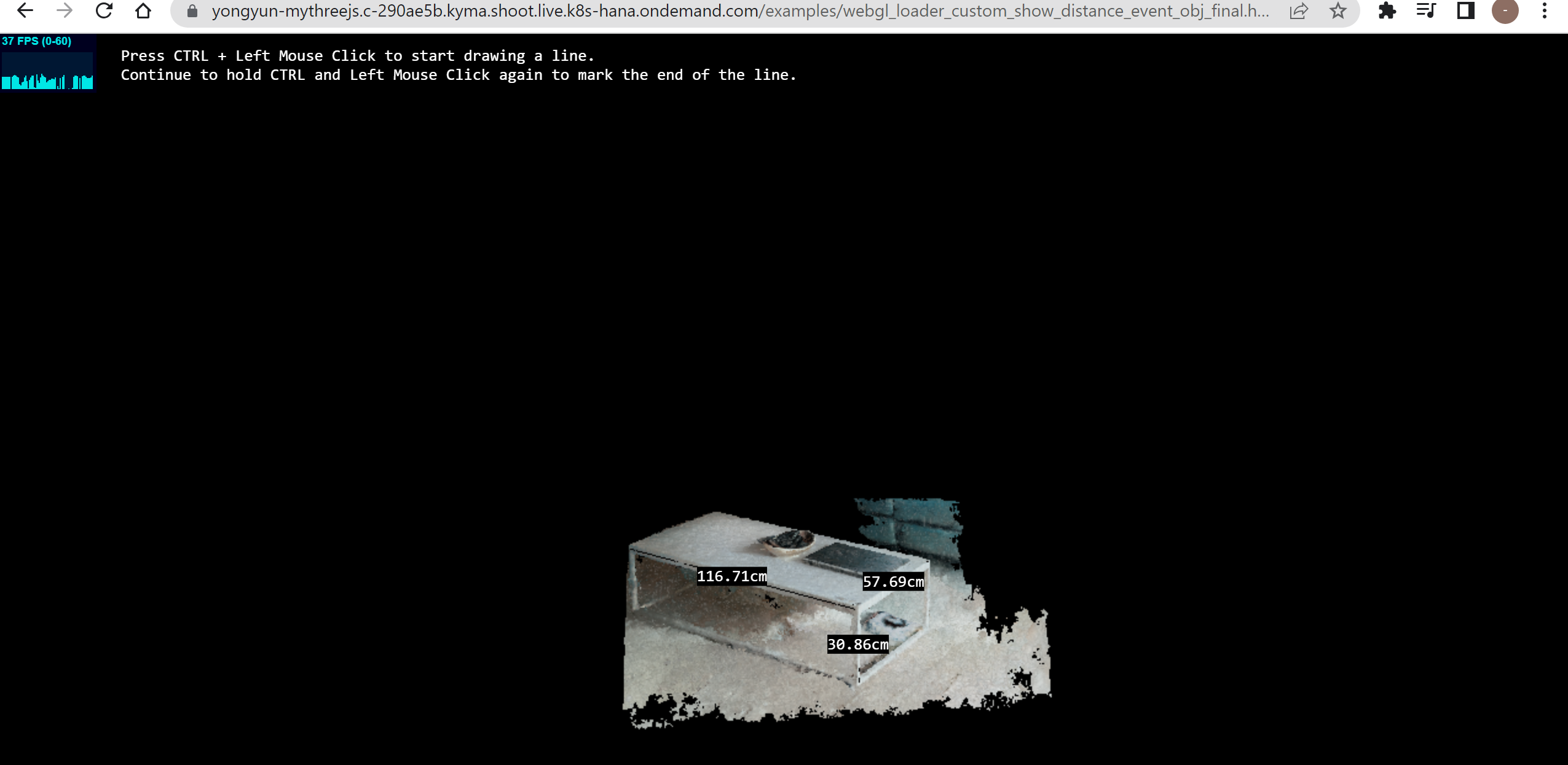
Measure 3D object
Problems and Limitation
The quality of the mesh is determined by the AABB scale, which determines the number of 3D spaces used for rendering. However, this approach may not yield optimal results when it comes to mesh quality. It is expected that future advancements in 3D reconstruction within the field of Computer Vision will greatly improve mesh quality.
Currently, techniques such as smoothing, noise removal, and scaling are commonly employed in Meshlab. Nevertheless, it is possible to import these functions into SAP BTP Kyma using Three.js, which would offer even more enhanced capabilities.
Overall
In Computer Vision, the latest 3D rendering technique is advancing rapidly. It is truly exhilarating to leverage the SAP BTP system to automate the process using this cutting-edge technique and share the results with the public through visualization.
This versatile technique finds applications across a wide range of industrial sites.
If you are interested in viewing my 3D work, please click the link below. Kindly note that it may take approximately one minute to load the data.
yongyun-3d-reconstruction
Credits
I sincerely appreciate the invaluable support from gunteralbrecht, who provided guidance on utilizing the latest technology with BTP System.
I would like to express my gratitude to lsm1401 for the assistance in creating the architecture for the project.
Special thanks to ryutaro.umezuki for the comprehensive guide on Three.js, which greatly contributed to the development process.
Lastly, I would like to acknowledge rugved88 for the valuable inputs during the brainstorming sessions.
Reference
- SAP Managed Tags:
- SAP BTP, Kyma runtime,
- SAP AI Core
Labels:
You must be a registered user to add a comment. If you've already registered, sign in. Otherwise, register and sign in.
Labels in this area
-
ABAP CDS Views - CDC (Change Data Capture)
2 -
AI
1 -
Analyze Workload Data
1 -
BTP
1 -
Business and IT Integration
2 -
Business application stu
1 -
Business Technology Platform
1 -
Business Trends
1,658 -
Business Trends
93 -
CAP
1 -
cf
1 -
Cloud Foundry
1 -
Confluent
1 -
Customer COE Basics and Fundamentals
1 -
Customer COE Latest and Greatest
3 -
Customer Data Browser app
1 -
Data Analysis Tool
1 -
data migration
1 -
data transfer
1 -
Datasphere
2 -
Event Information
1,400 -
Event Information
67 -
Expert
1 -
Expert Insights
177 -
Expert Insights
301 -
General
1 -
Google cloud
1 -
Google Next'24
1 -
GraphQL
1 -
Kafka
1 -
Life at SAP
780 -
Life at SAP
13 -
Migrate your Data App
1 -
MTA
1 -
Network Performance Analysis
1 -
NodeJS
1 -
PDF
1 -
POC
1 -
Product Updates
4,577 -
Product Updates
346 -
Replication Flow
1 -
REST API
1 -
RisewithSAP
1 -
SAP BTP
1 -
SAP BTP Cloud Foundry
1 -
SAP Cloud ALM
1 -
SAP Cloud Application Programming Model
1 -
SAP Datasphere
2 -
SAP S4HANA Cloud
1 -
SAP S4HANA Migration Cockpit
1 -
Technology Updates
6,873 -
Technology Updates
430 -
Workload Fluctuations
1
Related Content
- SAC: Do you have an option to limit the length in Measure in model? in Technology Q&A
- Characterization of Ship Trajectories in the Maritime Domain using Automatic Identification System (AIS) Data - An Application of SAP HANA Spatial Enabled by Coordinate Transformations. in Technology Blogs by SAP
- Smooth transition to ABAP for Cloud Development(Cheat sheet) in Technology Blogs by Members
- SAP Datasphere - Unit Conversion in Technology Blogs by SAP
- SAP Datasphere: HANA System Memory and CPU - Overall Consumption and Breakdown in Technology Blogs by SAP
Top kudoed authors
| User | Count |
|---|---|
| 26 | |
| 17 | |
| 15 | |
| 13 | |
| 11 | |
| 9 | |
| 8 | |
| 8 | |
| 8 | |
| 7 |
